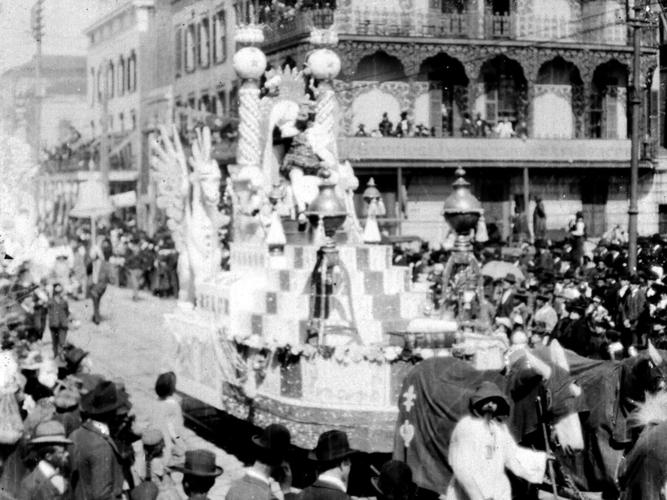Art World
A Researcher Just Found a Long-Lost Film of the 1898 Mardi Gras Parade, the Oldest-Known Footage of New Orleans
The two-minute film is 124 years old.

The two-minute film is 124 years old.

Artnet News

A museum researcher in the Netherlands has just tracked down a long-lost video of an 1898 Mardi Gras parade—believed to be the oldest-known footage of New Orleans.
The two-minute film shows throngs of gussied-up spectators watching as a series of lavish floats—one of which contains a live ox—pass by.
Since the 1980s, researchers had been looking for the film, scouring the Library of Congress, the Academy of Motion Picture Arts and Sciences, and beyond. Nothing turned up. Then, a local lawyer and float historian, Will French, mentioned it to a family friend who worked as an audiovisual researcher at the Eye Filmmuseum in Amsterdam.
The friend, Mackenzie Roberts Beasley, searched online databases until she tracked down the 124-year-old video, according to the Times Picayune, which first reported the news.
A digitized version of the film was screened last week at the Louisiana State Museum, and it is on view now through December in a special exhibition commemorating the 150th anniversary of the Rex Organization, which has been among the most prominent organizers of Mardi Gras floats since its founding in 1872.
After that, the snippet may be included in the museum’s permanent Mardi Gras display, according to Wayne Philliops, curator of its Carnival collections. “It’s just too important to lay aside and not share with our visitors,” he told nola.com.
The actual film, meanwhile, remains at the Eye Filmmuseum. Representatives did not immediately answer questions about the whether or not the institution will deaccession the movie or make it publicly available.
Join the Louisiana State Museum for a discussion of the artistry of the Rex parade and be the first to see a newly discovered film of the 1898 parade, now believed to be the earliest surviving moving footage of New Orleans! pic.twitter.com/0Foa6RGkM8
— Louisiana State Museum (@LaStateMuseum) June 15, 2022
Contemporary viewers will surely recognize the film’s parade as a Mardi Gras celebration, though the event features some distinct differences from the one that takes over the Big Easy’s streets today. There are, for example, no beads, no barricades, no police. Onlookers don suits and top hats and parasols, a far more formal approach than that taken by 21st-century revelers.
Atop one of the floats is a live ox, or the boeuf gras—an old tradition, ceased in early 20th century, that was meant to represent the last meat to be eaten before Lent. (Today, only papier-mâché oxen are seen.)
“That was really momentous—to see for the first time the live boeuf gras, the symbol of Carnival for everyone in the actual parade,” French, who is a historian and archivist for the Rex Organization, told the New York Times.
The film was was shot on 68-millimeter film, a high-quality format that makes its century-old details still visible today.
The film’s clarity “is so incredible,” Beasley told nola.com. “It’s a time capsule.”